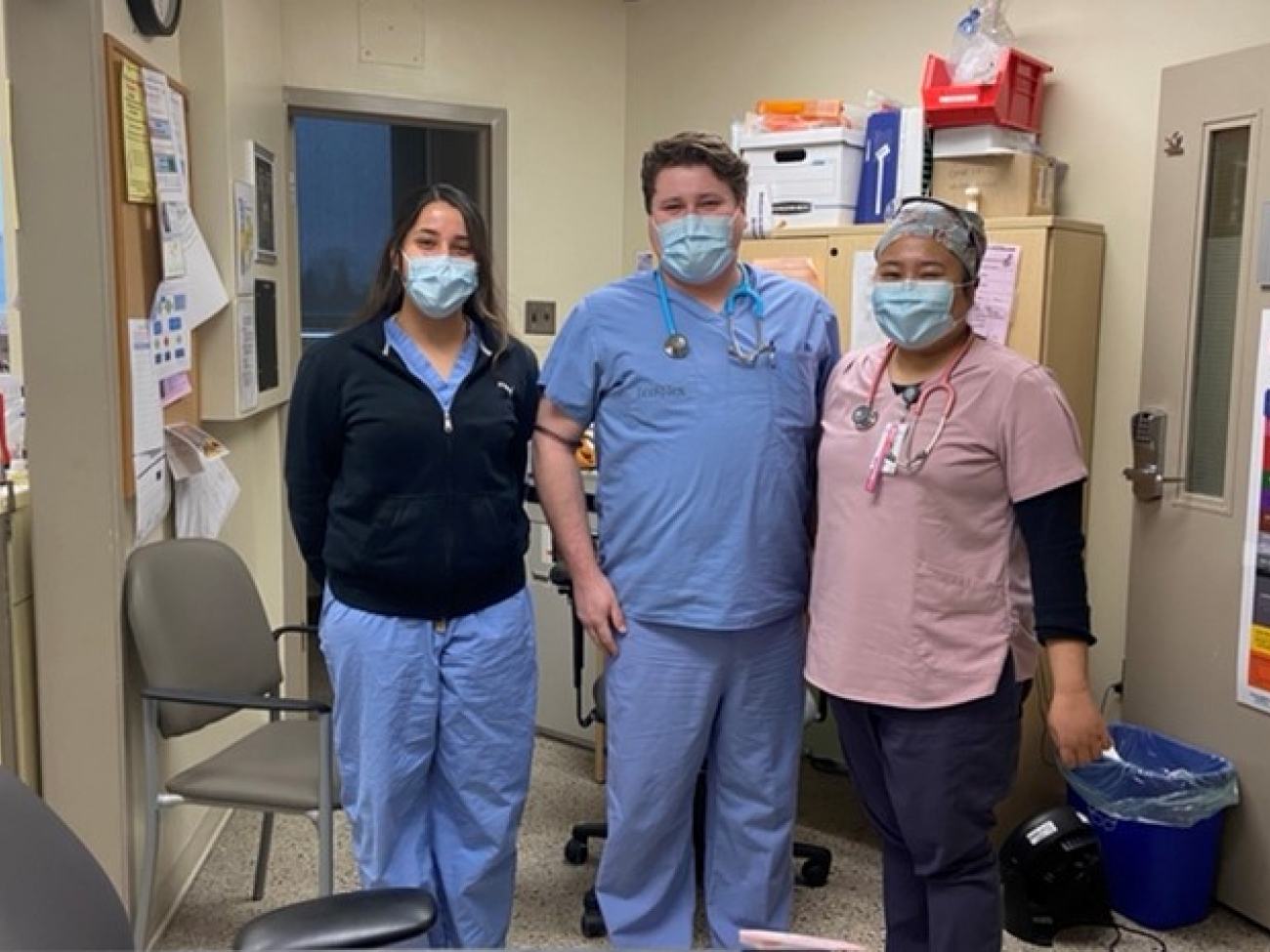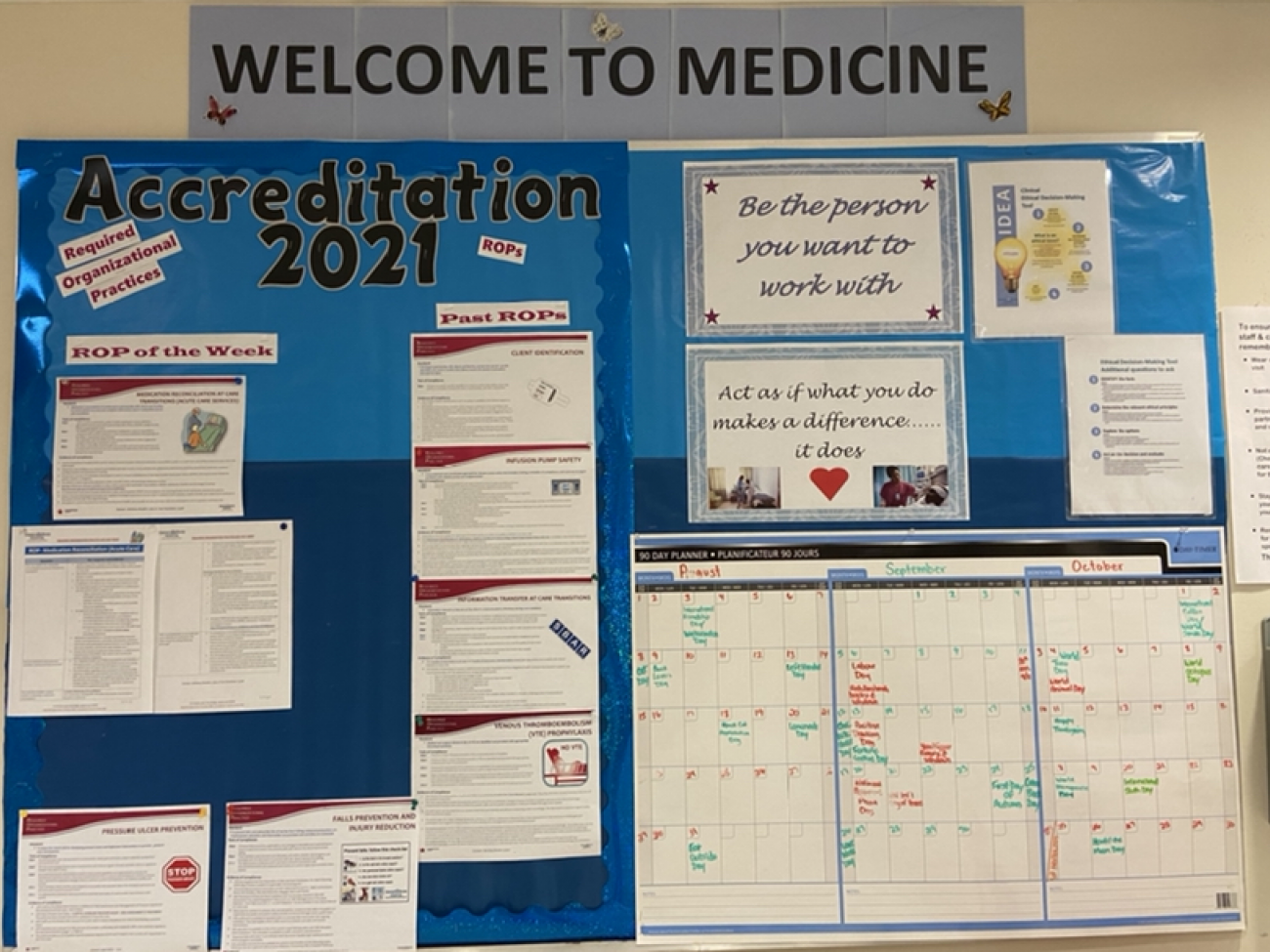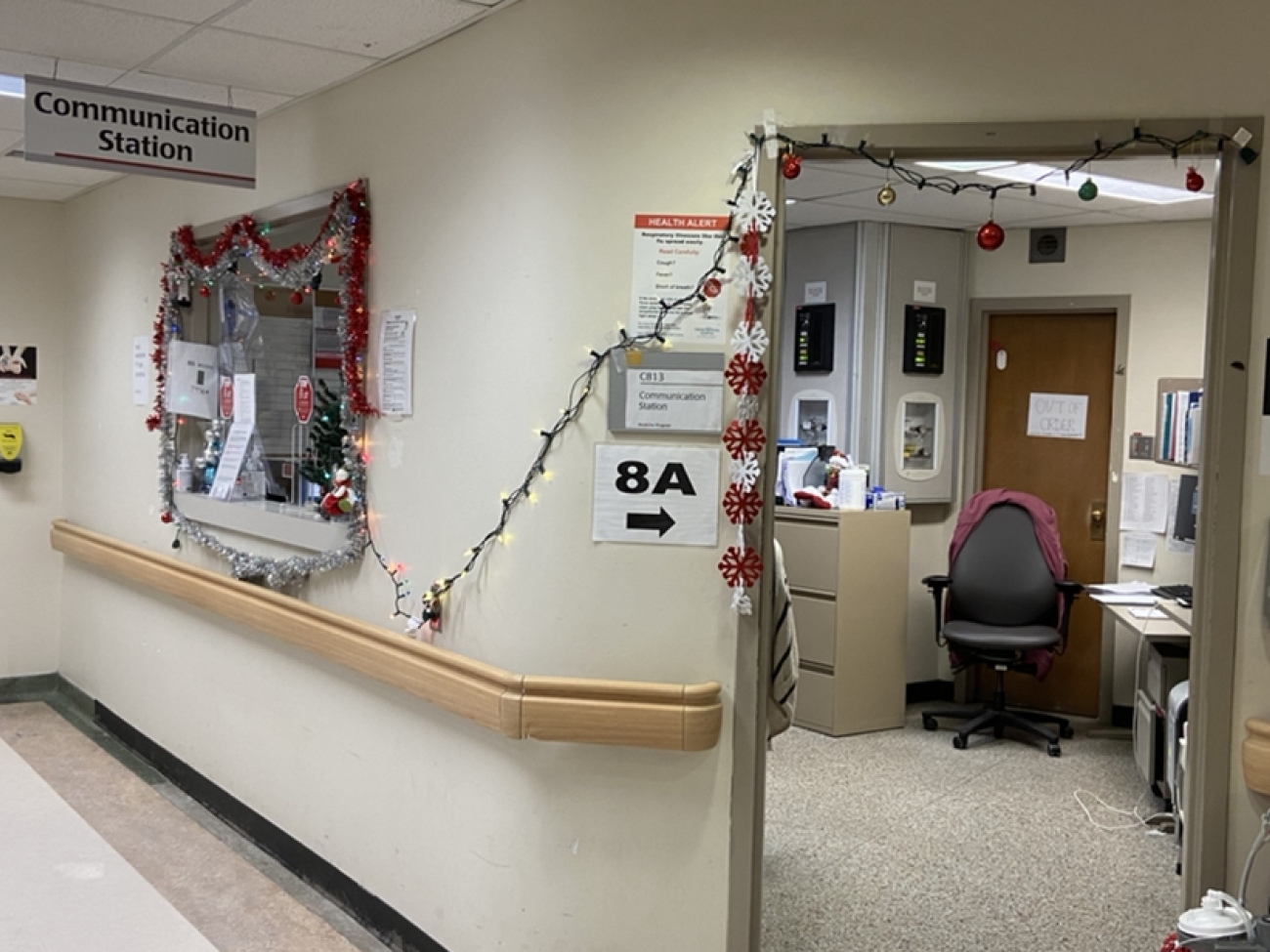Posted: December 16, 2021
It’s mid-morning on the eighth floor of the medicine program. Although it seems quiet, you can hear background chatter and distant ringing, as registered nurses (RN’s) and registered practical nurses (RPN’s) move swiftly from room to room after completing the breakfast round for patients in the unit.
The medicine program at Waterloo Regional Health Network is a vital source of care for patients. If a patient comes to the emergency department (ED) and their injury or illness is not immediately apparent, they are admitted into the medicine program, which spans across four units: 5A, 5C, 5 South and 8ABC.
“If the emergency department is the mouth, the medicine program is the heart of this hospital,” explains clinical manager Amanda Plozzer. “We take care of the patients here until their tests declare what’s wrong. From there, the patient is transferred to the most appropriate department.” Many patients are also discharged directly from the medicine program after receiving care.
On the fifth floor, the medicine unit (5A, 5C, 5 South, 5 North), clinical teaching unit (CTU), and acute care for the elderly (ACE) unit can be found, where clinical manager Jenna Merritt works closely with Amanda to ensure the medicine program is running smoothly across both floors.
Patients are most often sent to 5C if they are suspected of having COVID-19, to await their test results in a private room. This helps to ensure that if patients do have COVID-19, it is not spread to other patients receiving care on the unit. On 5C, charge nurse Naomi and RPN Jake work together to provide care for nine patients in the unit. Alongside providing patient care, Naomi and Jake act as liaisons between patients, care partners, and physicians.
Planning for patients to go home begins when patients arrive on the unit.
“When we plan for discharge, we have to know if the patient is going home, or to a retirement home or long term care,” says Naomi. “Once they are accepted to retirement, or long-term care and ready, we plan that transition [out of 5C]. Other discharge planning can include ensuring the patient has the appropriate home-care in the community, to support them to live at home.”
“It’s a busy [unit], even with [only] nine patients,” Naomi explains. “Great time management skills are crucial,” she says, just before she is pulled away for a phone call.
All discharge planning for the medicine program is managed in shifts by two nurses: Natalie and Melissa. After she returns from a discharge, Natalie stops to catch her breath and share more about her role.
“We facilitate nine to twenty-five patient discharges each day. Each depends on the patients’ level of acuity. We ask ourselves, are they stable? Are they in any care programs we should be aware of? Do we have an available bed at Freeport Campus?” Natalie explains. “The more efficiently we can move patients out and take more patients in, the more we can relieve pressure in the emergency department and continue to see patients there.”
The heart of the hospital, our medicine program, has experienced extreme pressure since the start of the COVID-19 pandemic, due to an increase in visits in the emergency department (ED).
“For the last six months the ED has seen 230 to 260 patients per day, a sky-rocket jump from our pre-pandemic average of 190 per day,” Natalie says. “Of course they feel this pressure, but it's our job to find beds for the increase in patients that need in-hospital care.” She admits the added pressure to maintain patient flow can be overwhelming at times.
One of the biggest barriers the medicine program faces is the transition time between the patients completing their care and waiting to be discharged from the hospital. Often, a patient will be ready to leave the medicine unit, but their care partner or means of transportation will not arrive until later in the day. Prior to the pandemic, these patients could wait in a lounge to free up their bed for the next patient but the lounge has been converted into additional care space to meet increased demand. This means a patient in need of treatment will be waiting in the ED longer until that bed is available. Difficulties accessing the right home-care in the community is another factor that significantly slows down the flow of patients from the emergency department, and increases wait times for care.
“As of 7 a.m., we had fifteen patients waiting to go home,” Natalie says. “Communication and multi-tasking is key in these circumstances. Our team is always cross-checking with physicians to see which patients can be prepared for discharge. We’ll also try to move any patient appointments as early as we can, to relieve the pressure in the ED. It’s an on-going battle,” she explains.
Lately, staff in the medicine program have also been challenged with an overwhelming amount of abuse from families and patients.
“As a manager, I am picking up more calls from abusive families. Most of their concerns are around visiting guidelines,” Amanda says.
The overall kindness from patients and families has dropped significantly since the rise of the pandemic, with most of the abuse aimed at those working on the front-lines.
“We’re trying to keep everyone as safe as possible, maintain some standard visiting and allow exceptions in particular cases. The strain from the pandemic for everyone has been overwhelming. Families are not their best selves, and COVID-19 has exacerbated the problem. At the same time, our team members deserve a respectful workplace,” Amanda adds.
Despite the challenges, the team continues to look on the bright side. “As stressful as it can be, the discharge process for patients is the most rewarding part of my job,” Natalie says, without a doubt. “When I can tell a patient that they can complete their care as an outpatient, they are so thankful. I love knowing they can finally be with their family.”
“Although the days can be really hard, and almost unbearable, the people I work with make it all better,” says Naomi. “We have a constant flow of communication and we help each other. My manager is so supportive. In healthcare, a supportive team is what makes the job great.”





